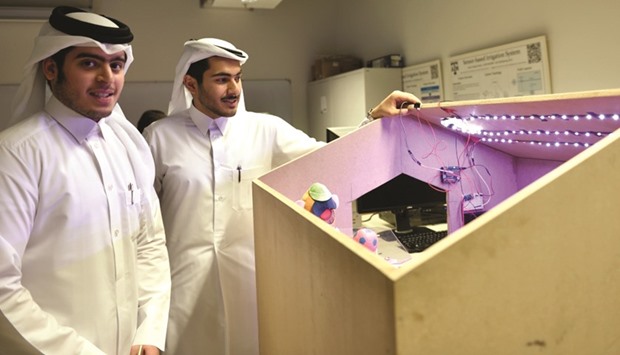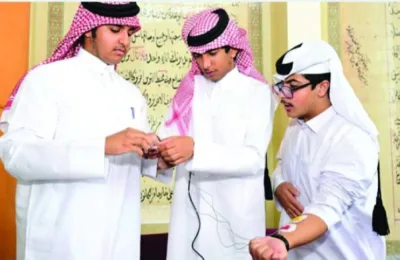After inspiring primary and secondary school students across Qatar with its innovative solar energy educational programme, Shams Generation has broadened its outreach to include institutes of higher learning.
An initiative of Qatar Solar Technologies (QSTec), Shams Generation celebrated the first successful completion of its Level 3 programme as a group of 30 undergraduate students of Texas A&M University at Qatar (Tamuq) showcased their MVPs (minimally viable products), centred around the efficient use of solar energy.
The Level 3 programme, which ran through the complete spring semester, was incorporated into the teaching curriculum as part of a graded course by Tamuq, marking another achievement for the growing influence of Shams Generation in the field of education.
Shams Generation’s educational programmes are designed to be tiered for primary (Level 1), secondary (Level 2) and tertiary students (Level 3).
“By engaging with Tamuq, we have managed to expand the outreach of Shams Generation to include universities and aid in developing the solar energy applications knowledge of these future engineers,” said QSTec chairman and CEO Dr Khalid K al-Hajri.
“The work the students have produced is absolutely amazing and highlights the value our Shams Generation initiative is adding to solar education in Qatar,” he explained.
The class of juniors were invited to design fully functional solar MVPs on the hypothesis they could be turned into commercially viable products if a startup funding was available.
The 30 students were divided into seven teams for the duration of the project and provided with a Shams Generation advanced solar kit to test their innovative ideas on.
For Tamuq, the collaboration allowed the university to offer students a STEAM (science, technology, engineering, art and mathematics) environment from the typical STEM education engineering students are designed to encounter.
“Engineers tend to be myopically focused on technology, as they are trained to think about equations and technical problem solving,” said Dr Robert S Balog, associate professor in the Electrical and Computer Engineering Programme, who recently joined the Qatar faculty on a joint appointment from the main campus in the US.
Through the partnership with QSTec, Dr Balog observed he was able to provide a real-world challenge for the students in his course on renewable energy, namely how to raise awareness of solar energy in a way that is accessible to the general public.
“The skills learned in this project will help the students become better at articulating value proposition to a multitude of stakeholders as they transition from student into professional,” said the expert in power electronics, solar energy and a former entrepreneur in a solar micro-inverter start-up company before joining Tamuq.
Given that solar energy is holding so much potential in Qatar and the region, Tamuq vice dean Dr Eyad Masad hoped that such interactive, playful works of art can help to encourage public dialogue about solar energy.
The Shams Generation programme is the largest ever national-level educational exercise of its kind in Qatar and aims to forge a blueprint for progress on sustainability of solar energy as a resource, using the interdisciplinary approach of STEAM.
QSTec is a joint venture formed between Qatar Solar (a wholly-owned subsidiary of Qatar Foundation for Education, Science and Community Development), SolarWorld AG and Qatar Development Bank, that is built on a philosophy of quality, operational excellence and commercial integrity.
QSTec is currently building an 8,000 metric tonne per annum polysilicon facility in Ras Laffan Industrial City, Qatar in addition to being the largest private equity holder in the global solar company, SolarWorld AG and owning 50% of the solar and semi-conductor manufacturing technology company, Centrotherm AG.
The plant is spread on a site of 1.2mn sq m and covers an area of half a million sq m. The facility will run two polysilicon trains with a capacity to produce 8,000 metric tonnes per year of pure polysilicon – the key ingredient used in 90% of the world’s solar modules.
Built on an area of 500,000sq m, the plant is set to be the largest solar facility in the region – with a pipe network of 200km and an electrical cable above 3,000km. Construction utilised is 15,000 metric tonnes of steel and 100,000 cubic metres of concrete.
QSTec and its partners are the key solar technology suppliers for some of Qatar’s most iconic buildings and offer turnkey solar energy solutions for any sized project, in addition to offering high quality polysilicon and manufacturing technologies to customers around the world.

Two Qatari students of Tamuq with their project.


